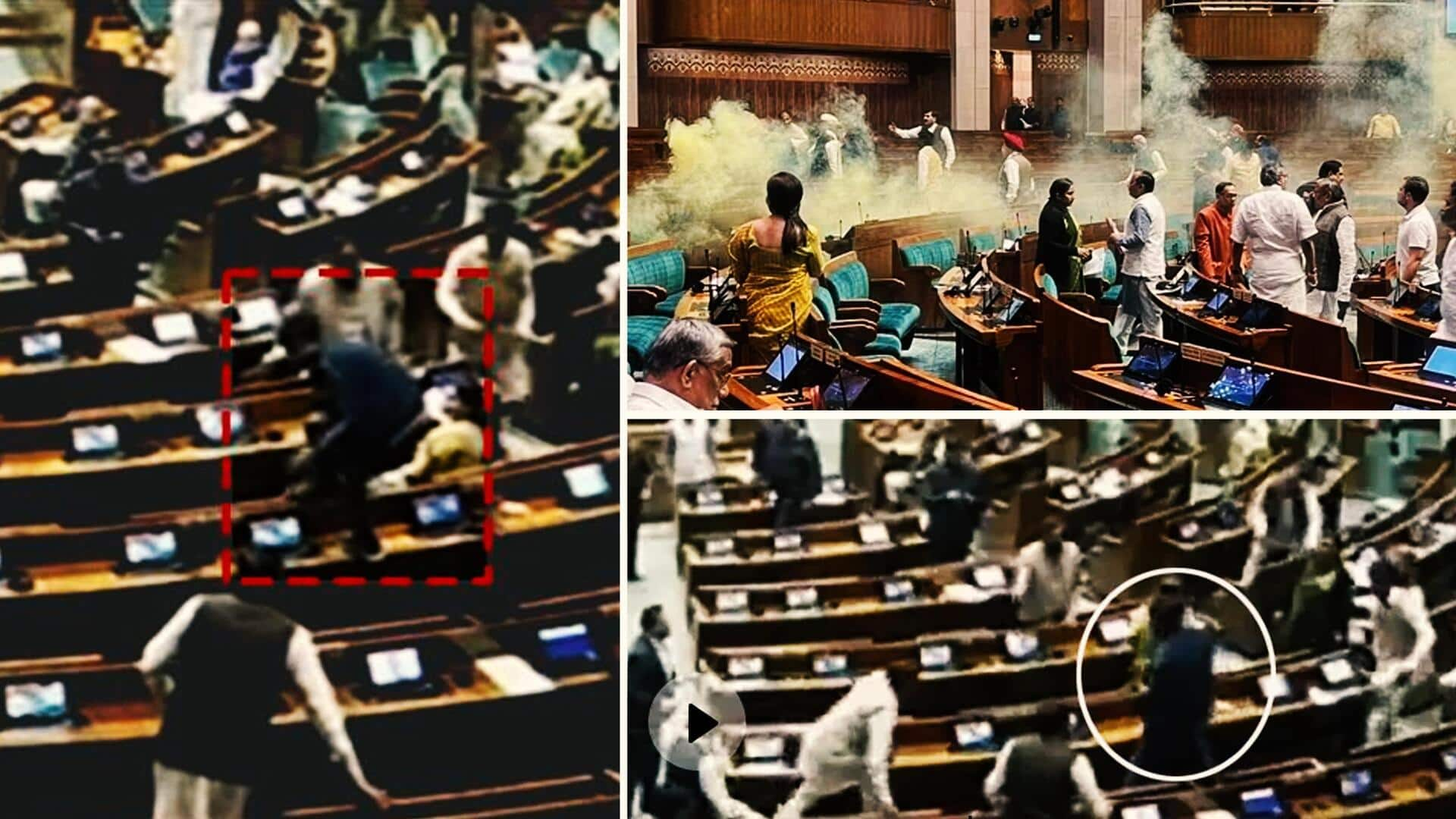
Parliament breach brings security protocols under scrutiny
What's the story
The Parliament security breach on Wednesday wherein two young individuals jumped into the Lok Sabha chamber from the visitors' gallery with smoke bombs while two others created a ruckus outside the complex shocked the nation. Although the Lok Sabha Secretariat on Thursday suspended eight security personnel for lapses and the security protocols in the Parliament building have been revamped, the incident has raised questions about the security arrangement in the new Parliament complex.
Context
Why does this story matter?
Two individuals, Manoranjan D and Sagar Sharma, jumped into the Lok Sabha chamber from the visitors' gallery on Wednesday, setting off yellow smoke bombs and shouting slogans. They were overpowered by MPs and security personnel. Simultaneously, two others—Neelam Azad and Amol Shinde—carried out a similar act outside Parliament before being arrested. On the same day in 2001, five armed Jaish-e-Mohammed and Lashkar-e-Taiba terrorists infiltrated the Parliament complex and killed eight security personnel and a gardener before being shot down.
Details
Who is responsible for the security in Parliament complex?
The Parliament Housing Complex has numerous layers of security, involving cooperation between various agencies. They are the Parliament Security Service, Central Reserve Police Force (CRPF), Indo-Tibetan Border Police (ITBP), Delhi Police, Special Protection Group (SPG), National Security Guards (NSG), and Intelligence Bureau. On top of that, a note issued by the Rajya Sabha in 2020 titled "Parliament Security Service: an Overview," states that the enhanced security measures inside Parliament include background verification of those seeking access passes.
What Next?
Passes and regulations for visitors, media
Visitor gallery passes are issued in limited numbers based on applications submitted by MPs. Enhanced security measures include background checks for visitors before granting access passes. Visitors must go through several security checks, including metal detectors and frisking machines with advanced sensors. Moreover, visitors cannot carry any objects or change their assigned seating or public gallery location within the House. Visitors are not allowed to take photographs or notes, while press correspondents can take notes from the press gallery only.
Insights
Role of security personnel in public gallery
This security breach raises crucial questions about how these individuals carrying smoke bombs managed to bypass multiple layers of security, including metal detectors and frisking. A 2010 Rajya Sabha note explicitly prohibits leaning over the railings in the galleries, yet one person dangled and another jumped. This puts the role of the security wing in the public gallery in the spotlight. The background check before issuing passes also failed to assess the purported threat.
Facts
How did the intruders get passes?
Manoranjan—hailing from Karnataka's Mysuru—obtained two visitors' passes from Bharatiya Janata Party's (BJP) Mysuru MP Prathap Simha to enter the House. Simha said he had no additional information about the accused. The accused reportedly smuggled the smoke bombs inside the house by hiding them in their shoes. Although the gas from the smoke bombs was harmless and it seems that the intruders intended to grab public attention, the "what if" scenarios evoke terrible imagery.